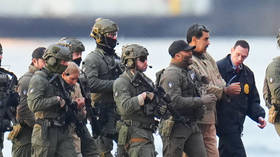Dozens of nukes go offline in biggest ever US security failure
According to military officials, last Saturday a computer failure caused disruptions in communication with some 50 nuclear missiles in Wyoming.
All in all the control over the missiles was unavailable for some 45 minutes, and officials don’t believe that the act was intentional.
However, the issue was so serious that the White House was briefed on it on Tuesday.
The Warren Air Force Base is home to one-ninth of the US missile stockpile.
Joseph Cirincione, the president of the Ploughshares Fund, a public grantmaking foundation focused on nuclear weapons policy and conflict resolution, cautioned against rushing to conclusions, but still agreed that the issue is very serious.
“We are talking about losing communication with a whole squadron of intercontinental ballistic missiles,” Cirincione told RT. “These are missiles that can travel the ocean, between the continents in about 30 minutes. Each of them is armed with a hydrogen bomb. Designed to actually have three warheads per missile, they were downgraded to just one. Still, each of these bombs is 10 times the size of the one that destroyed Hiroshima. So we are looking approximately at 500 Hiroshimas of destructing force.”












